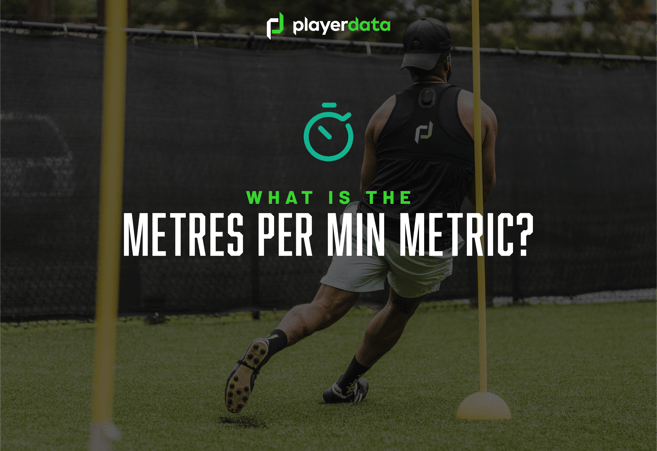What is the MPM Metric?
What is the metres per minute metric and how to use this to improve players performance.

What is the metric?
Metres per minute- MPM, (m/min)
What does it measure?
Metres per minute (m/min) is a measurement of speed, as an average calculation of the metres run in each minute of a training session or game. For example, if a player has ran a total distance of 9500m in a 90 minute game, their metres per minute would be 105.5m (9500/90). This data can showcase how intense the session was and how hard players have worked. Professional players will reach between 90–115 m/min in a typical game.
How to interpret the metrics?
Metres per minute is an average figure, this means that regardless of the time spent playing on the pitch you can compare the relative work rate of several players in the same game. However, it is still important to remember a couple of factors.The first is that someone who has played 90 minutes won’t be able to work at as high an intensity as someone only playing 20 mins, as fatigue would set in far more! The second is that metres per minute ran is also dependant on the players position. A wide midfielder will cover more distance throughout the game running the length of the pitch compared to a central defender. Therefore, it is key that coaches take these factors into account when analysing individual athletes running performance.
How can I use metres per minute to benefit my team?
This metric can be useful for implementing into training so that players are able to maintain a high intensity.The MPM metric is also a great metric to give you an insight into the intensity of a game so that this can be replicated in training to appropriately prepare for matches. By creating some fast paced high intensity short training drills this can aid in improving players metres per minute over time in matches. Coaches are also able to identify individual players fitness levels any areas of improvement that are needed. For example, if a player is consistently performing a at a lower than expected MPM in matches, coaches can implement an effective training plan for them to improve both their anaerobic and aerobic capacity. In the long term, this will increase players ability to perform at a high intensity for longer durations in matches.
What should players be aiming for?
Football Elite (Men’s)
FB 126.9 ±7.2
CD 110.5 ±5.4
CM 128.5 ±8.5
WM 133.2 ±8.5
FWD 115.8 ±9.7
Total 122.7 ±11.2
Football Elite (Women's)
FB 110 ± 9.2
CB 100 ± 7.3
MF 115 ± 7.9
FWD 108 ± 10
Total -108 ± 10
Football Playerdata Average (Men’s)
COMING SOON
Football Playerdata Average (women’s)
COMING SOON
Rugby Elite
Forwards 68.6 ± 9.5
Backs 72.9 ± 11.4
Tight Forwards 66.8 ± 10.4
Loose Forwards 70.4 ± 8.5
Half Backs 77.7 ± 11.6
Inside backs 71.2 ± 11.3
Outside backs 69.7 ± 11.4
Rugby Playerdata Average (Men’s)
COMING SOON
Rugby Playerdata Average (women’s)
COMING SOON
GAA Elite
Defenders 104
Midfielders 117
Forwards 99
Totals 103
GAA Playerdata Average
